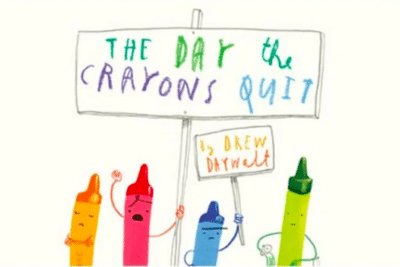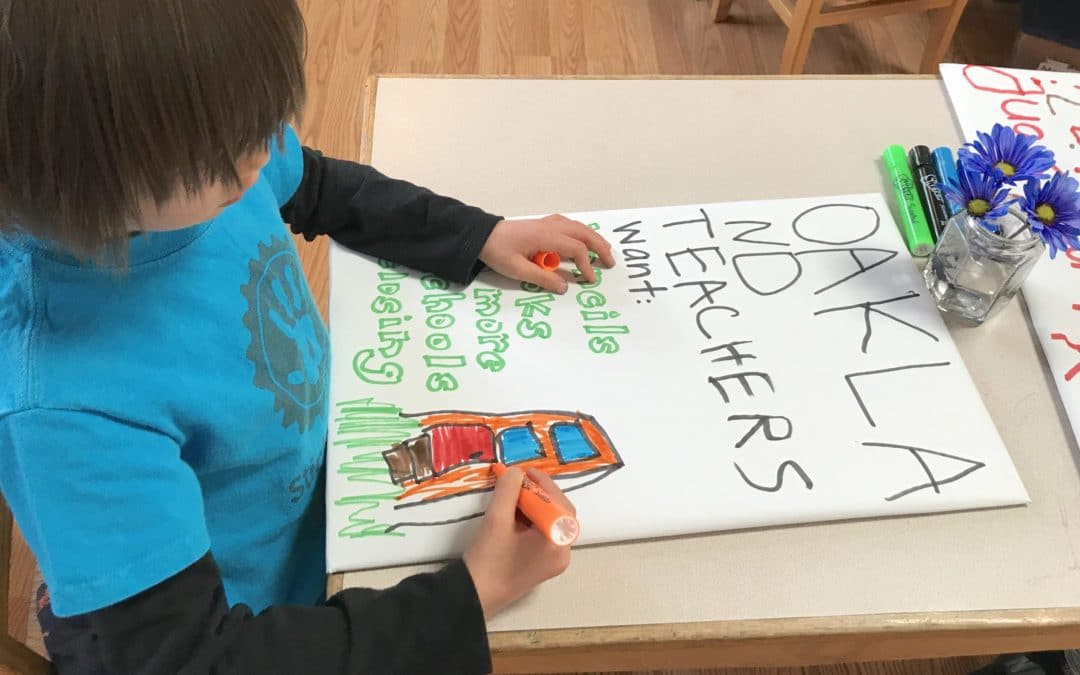by Kirstie Mah, Eugenia Classroom Head Teacher
Every child has the right to go to school (the right to an education.) With our return to school after mid-winter break, teachers from the Eugenia classroom on our Early Childhood Campus invited their students to think about about what we do at school. These are some of our thoughts:
“We do our work at school.”
“We play.”
“We learn.”
“We read stories”
“We don’t run inside.”
Together, we thought about whether we’d rather go to school or go to work and everyone agreed we’d rather go to school or to do our work at school. Then we talked about how not all children have the opportunity to go to school or to go to schools where they have enough space, crayons and markers, or have enough adults, like nurses and teachers, to take care of them. We observed that we’ve never heard classmate friends complain that it’s too crowded in our classroom to learn, or too loud to learn, or that there aren’t enough teachers to answer our questions or help us do our work. And we talked about how some children do complain about those things when they go to school.
 We read the book, The Day the Crayons Quit by Drew Daywalt and Oliver Jeffers. inspired by our observations of the book’s text and illustrations, we discussed what a strike, demands, actions, and chants are, as well as how the crayons felt being on strike: “tired,” “exhausted,” “sad,” “mad,” “really mad,” “angry.” We connected this to the Oakland Unified School District teachers who are on strike for their students and schools. Some children commented, “My mom is on strike,” and “Like on TV!” The signs that the crayons are holding on the cover illustration caught our attention and we decided to brainstorm what the purpose of those signs might be and what the materials we would need to make signs of our own.
We read the book, The Day the Crayons Quit by Drew Daywalt and Oliver Jeffers. inspired by our observations of the book’s text and illustrations, we discussed what a strike, demands, actions, and chants are, as well as how the crayons felt being on strike: “tired,” “exhausted,” “sad,” “mad,” “really mad,” “angry.” We connected this to the Oakland Unified School District teachers who are on strike for their students and schools. Some children commented, “My mom is on strike,” and “Like on TV!” The signs that the crayons are holding on the cover illustration caught our attention and we decided to brainstorm what the purpose of those signs might be and what the materials we would need to make signs of our own.
The students participated in an exercise that demonstrated how school closures and large class size might feel and Eugenians concluded that it was “squishy” when everyone had to crowd into one “school” and preferred it when there were more “schools” and plenty of space to sit down.
We used our senses of sight and hearing to observe photos and videos of the OUSD teachers’ strike and thought about what we could do to help. We heard: “train sounds,” “whistles,” “trumpets,” “music,” “shouting,” “drums,” and “chanting”: “Hey hey, ho ho, school closures have got to go! “We want books, supplies, and smaller class size,” “1. We are the teachers 2. A little bit louder 3. We want justice for our students.” We saw: “Red,” “Picket signs,” “Buildings,” “They’re on the street,” “A heart” “All the colors!” “They’re walking on the street with no lights,” “Kids!” “A kid holding a picket paper,” “A picket sign with people on it,” “Red and Black letters,” “They’re holding picket signs,” “They’re chanting,” “They’re shouting,” “They’re walking,” “bullhorns,” “Coats,” “She’s waving,” “She’s has her hand up,” “People are on the balcony, they’re waving to her,” “Signs in the back,” “There’s kids and grown ups,” “They’re walking.”
Eugenians decided they wanted to make their own picket signs and came up with their own messages in words and pictures inspired by the teachers that are on strike and the students and families who support them. They had control over the design of their poster, what, where and how their words were written and where there was space to draw.
This is the beginning of an ongoing conversation about how even if you’re small, you can make big changes in the world.

